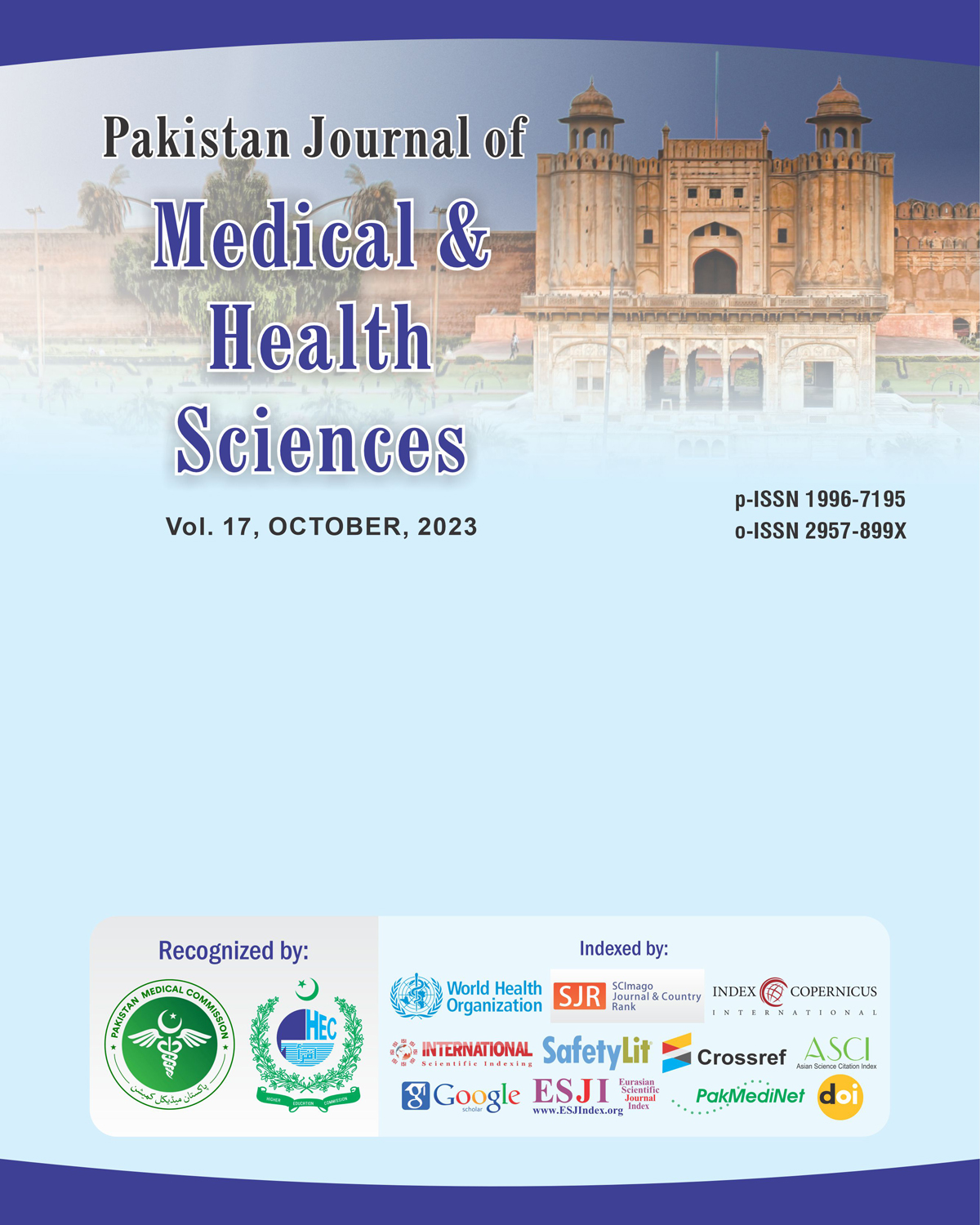Long-Term Complications and Revision Rates in Hip Arthroplasty
DOI:
https://doi.org/10.53350/pjmhs20231710119Abstract
Introduction: Hip arthroplasty represents one of the most commonly conducted surgical treatments for patients who experience pain together with functional limitations in their hip joints. The primary long-term complications associated with hip arthroplasty consist of infection together with prosthetic loosening and needing additional surgical procedures. The main objective of this research is to analyze both the long-term complications along with revision rates that affect patients who receive hip arthroplasty.
Methodology: The study took place at the Department of Orthopedics, Rehman Medical Institute, Peshawar and DHQ Teaching Hospital, Timergara, through a prospective cohort design that analyzed 118 patients receiving hip arthroplasty procedures from March 2021 to March 2023. Adult patients who received their first hip arthroplasty surgery qualified for the study as long as they did not have previous joint surgeries and systemic infections. A follow-up period of three years occurred during which patients received evaluations of their complications and functional results through the Harris Hip Score (HHS) and needed revision rates. Researchers used chi-square, t-tests alongside survival analysis for their statistical procedures.
Results: Complications occurring in 28.8% of patients resulted mainly from infections that affected 7.6% of patients and prosthetic loosening in 5.9% of patients and stiffness/functional decline present in 8.5% of patients. Aseptic loosening, infection and wear accounted for most of the 10.2% revision rate. Among all implanted prostheses 88% survived through three years of follow-up and cemented prostheses secured an 90.3% success rate that exceeded uncemented prostheses at 85.7%. The patient health factors of age along with obesity and diabetes mellitus led to both complications and necessary revisions. During follow-up medical personnel observed a 7.4 point reduction in the mean Harris Hip Score.
Conclusion: Hip arthroplasty experiences high rates of complications alongside extensive reoperation rates as the main findings indicate according to this study. The survival numbers were in favor of cemented prostheses when compared to uncemented prostheses. Extensive research that involves bigger multicenter studies and extended follow-up periods to understand the long-term durability of hip arthroplasty should be conducted.
Keywords: Hip arthroplasty, complications, revision rates, prosthetic loosening, infection, functional outcomes, cemented prosthesis.
Downloads
How to Cite
Issue
Section
License
Copyright (c) 2023 Abdul Waheed, Feroz Shah, Liaqat Khan, Ahsan Ul Haq, Adil Saidullah, Aman Ulhaq

This work is licensed under a Creative Commons Attribution 4.0 International License.


